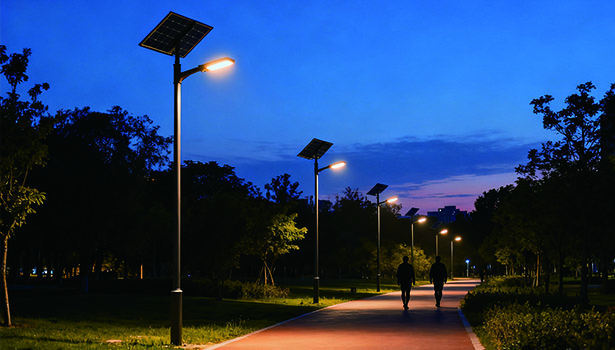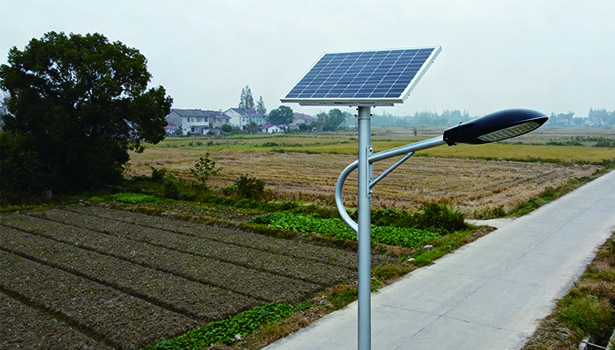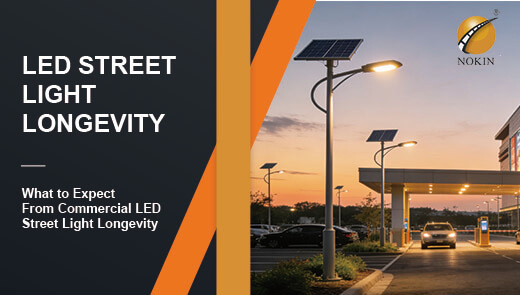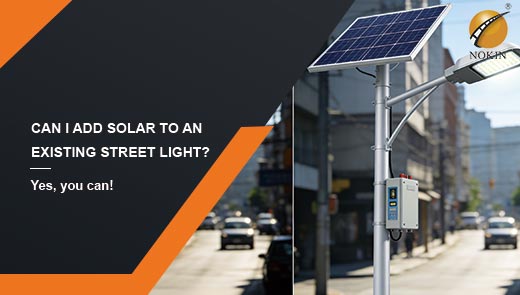Aluminum Alloy, Glass, and PC Solar Street Lights: Durability Selection Guide
In the outdoor lighting sector, solar street lights and LED street lights have become mainstream choices due to their energy-saving and eco-friendly advantages. Material quality is the core factor determining their durability and operating costs. Currently, the core materials for solar and LED street lights on the market are primarily aluminum alloy, glass, and PC (polycarbonate). Each exhibits distinct properties in corrosion resistance, impact resistance, and weather resistance, making them suitable for different outdoor environments. This article analyzes the core characteristics of these three materials from a practical application perspective, providing a useful reference for selection.

Aluminum Alloy Solar Street Lights
Corrosion Resistance
Aluminum alloy possesses exceptional metallic stability. It effectively resists erosion in coastal areas with high salt fog, humid and rainy southern regions, and dust pollution in industrial zones, without rusting or deteriorating. High-quality solar street light products undergo anodized surface treatment, forming a dense protective layer. This layer further isolates the material from air, moisture, and pollutants, allowing it to maintain its original state even with long-term outdoor exposure. It prevents surface discoloration or damage, making it suitable for various complex corrosive environments. Even when used as the housing material for LED street lights, it delivers the same corrosion resistance advantages.
Structure and Impact Resistance
Aluminum alloy achieves a balanced state of toughness and strength. Common occurrences in daily use, such as minor collisions or scratches from branches, will not damage its structure or cause deformation or dents. Its robust structural integrity allows it to withstand typical outdoor forces without requiring additional reinforcement. This ensures the safe operation of solar street lights while reducing failure risks from structural damage. For LED street lights, which rely on stable structures for heat dissipation and sealing, this property is equally crucial.
Heat Dissipation and Aging Resistance
As an excellent thermal conductor, aluminum alloy rapidly dissipates heat generated by the internal battery and LED light source into the air. This prevents damage to internal components from accumulated high temperatures, effectively extending the lifespan of core parts. Additionally, it exhibits outstanding UV resistance and adaptability to extreme temperatures. Even in harsh cold or intense heat, it does not exhibit aging phenomena like brittleness or cracking. Performance remains stable over extended use, making it a key material choice for LED street lights.
Lifespan and Maintenance
Thanks to its combined advantages of corrosion resistance, aging resistance, and heat dissipation, aluminum alloy solar street lights can achieve a normal service life of over 10 years, demonstrating outstanding durability among the three materials. Maintenance requirements are minimal. Routine operation requires no frequent inspections or upkeep. Occasional checks of the luminaire's seals to prevent rainwater ingress ensure long-term stable operation, significantly reducing subsequent maintenance costs and labor. This low-maintenance characteristic also makes it a popular material for outdoor LED street light applications.
Glass-Bodied Street Lights
Light Transmission and Corrosion Resistance
The core advantage of glass lies in its exceptional light transmission. It maximizes sunlight absorption by the solar panels, enhancing charging efficiency, while also ensuring clear light output from the LED source for optimal illumination. From a corrosion resistance perspective, glass itself remains unaffected by environmental factors like acids, alkali, or salt spray. Even with prolonged outdoor exposure, its surface shows no damage or degradation, maintaining stable performance. This characteristic also finds application in the design of light diffuser for LED street lights.
Impact Resistance and Structural Weaknesses
Impact resistance is glass's greatest weakness. It is prone to shattering under sudden impacts like hailstorms or falling objects. This not only directly compromises the solar street light's functionality but also creates sharp fragments, posing safety hazards.
Furthermore, the connection between the glass and the lamp body relies entirely on sealing gaskets. After prolonged outdoor use, these gaskets gradually age, harden, and crack, leading to seal failure. Rainwater can then easily seep into the lamp body, damaging electronic components. This is also a common root cause of failure in glass-based solar street lights and LED street lights.

Installation and Replacement
Glass materials are inherently heavier than aluminum alloy and PC materials, making the installation process more cumbersome and requiring greater manpower coordination. This increases labor costs and operational complexity during solar street light installation. Once damaged, glass materials cannot be repaired and must be replaced entirely. Not only are replacement parts costly, but the disassembly and installation procedures during replacement are also relatively complex, further elevating maintenance difficulty and expenses. This issue is equally prominent when replacing the light-transmitting covers of LED street lights.
Lifespan and Suitable Applications
Limited by poor impact resistance and sealant aging, glass solar street lights typically have a lifespan of 5-8 years, shorter than aluminum alloy and high-quality PC materials. Their application scenarios are also relatively restricted. They are best suited for installation in environments like urban parks and scenic areas where conditions are stable, external impacts are unlikely, and regular maintenance by staff is feasible. This maximizes the avoidance of frequent failures. This scenario limitation also applies to LED street lights using glass light diffuser.
PC Material Street Lights
Core Impact Resistance Advantage
PC material, renowned as “bulletproof plastic,” boasts exceptional impact resistance as its standout feature. Whether subjected to severe hailstorms, branch collisions, or minor bumps during transportation and installation, it rarely sustains significant damage and never shatters.
It also exhibits excellent flexibility. Even if slightly deformed by external forces, it can self-recover to its original shape without structural damage. This makes it particularly suitable for solar street lights in complex outdoor environments like rural roads and mountainous areas. For LED street lights installed in such scenarios, this impact resistance effectively reduces the probability of failure.
Installation and Foundation Characteristics
PC material is lightweight and significantly easier to install than glass, allowing a single person to complete the task. This greatly reduces labor costs and operational complexity during solar street light construction. Simultaneously, it maintains good basic light transmission, meeting the core requirements for daily charging and illumination of solar street lights. The material itself does not impair energy conversion efficiency, ensuring practicality while also prioritizing ease of use. This characteristic makes it one of the most commonly used materials for outdoor LED street light applications.
Corrosion and Aging Resistance
PC material exhibits relatively weak corrosion resistance. When exposed long-term to environments with high salt fog (e.g., coastal areas) or severe industrial pollution, its surface may develop damage such as whitening or cracking, affecting appearance and lifespan. Regarding aging resistance, product quality varies significantly. High-quality PC materials incorporate UV (ultraviolet) inhibitors, effectively countering sunlight-induced aging to prevent yellowing and brittleness.
In contrast, inferior PC materials lack such treatments and may show noticeable performance degradation within 3-5 years. This difference becomes directly apparent during the long-term use of solar street lights and LED street lights.

Lifespan and Key Selection Points
High-quality PC solar street lights can last 8-10 years. With proper maintenance, they maintain stable performance and offer outstanding cost-effectiveness. The core selection principle is to choose products from reputable manufacturers. Carefully verify the presence of UV-resistant treatment specifications to avoid purchasing items made from inferior materials. Additionally, pay attention to product thickness and manufacturing details to ensure they meet the demands of long-term outdoor use. This prevents premature failure due to product quality issues. This selection principle also applies when choosing LED street lights with PC components.
Core Recommendations for Precise Selection
Select Based on Usage Environment
For coastal, humid, rainy, or heavily industrialized areas, prioritize aluminum alloy solar street lights. Their superior corrosion resistance and heat dissipation capabilities withstand complex environments, ensuring long-term reliability. For rural roads, mountainous areas, or other locations prone to external impacts and relatively complex natural environments, PC material solar street lights are a more suitable choice. Their superior impact resistance reduces the likelihood of malfunctions.
In stable environments like urban parks and scenic areas, free from significant external disturbances, glass material solar street lights can be considered to fully leverage their light transmission advantages. This selection logic also applies to material choices for LED street lights in various scenarios.
Selecting Based on Maintenance Conditions
For areas with limited access, remote locations, or difficulty arranging frequent maintenance personnel, PC or aluminum alloy solar street lights are more suitable. Both have low failure rates and minimal maintenance requirements, reducing the hassle and cost of long-term upkeep. If the installation site allows for regular maintenance where personnel can promptly inspect and address faults, glass solar street lights can also be considered. Regular replacement and inspection of the sealing gaskets ensure their normal operation. Material selection for LED street lights can similarly reference these maintenance condition differences.
Selecting Based on Budget and Lifespan
For long-term use, low maintenance costs, and ample budgets, aluminum alloy solar lights are the optimal solution. Their lifespan exceeding 10 years minimizes replacement frequency and overall costs. For moderate budgets and mid-term use, high-quality PC material solar lights offer better value. Their 8-10 year lifespan meets most needs with moderate maintenance costs.
For short-term use with limited budgets prioritizing light transmission efficiency, glass-material solar street lights can be considered. However, prepare in advance for potential breakage and seal aging. Similar logic applies when selecting LED light materials based on varying budgets and lifespan requirements.
There is no absolute superiority in material choices for solar or LED street lights; the key lies in matching the application scenario and actual needs. Aluminum alloy's all-around durability, PC material's impact resistance, and glass's high light transmission each suit different outdoor environments and maintenance conditions. By selecting the appropriate type based on your budget, expected service life, and specific application characteristics, you can maximize the long-term value of solar and LED street lights. This approach minimizes operational hassles and reduces overall costs.




